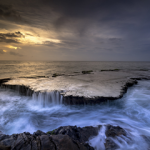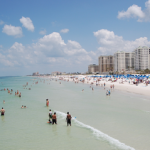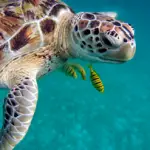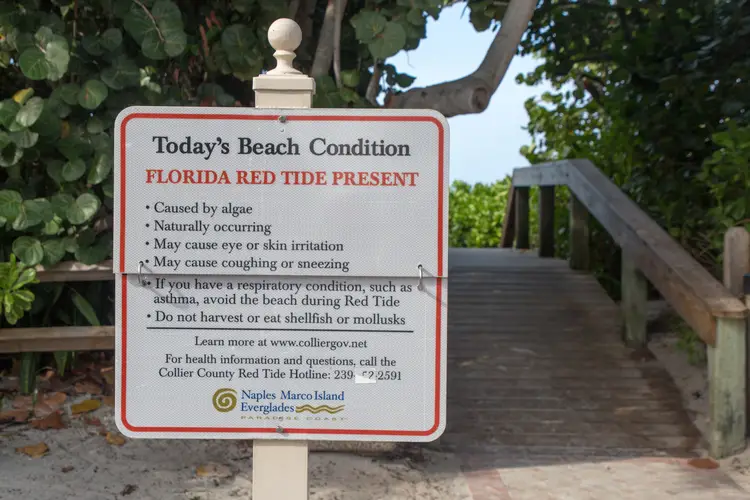
Whether you are a swimmer, a snorkeler or a scuba diver you are probably interested to know how a red tide can affect you. If you suffer from a chronic respiratory illness, the brevetoxins from red tides can affect you badly, which is why it’s important to understand red tides in Florida and when they occur.
Red tides in Florida are caused by harmful algae blooms, which can kill fish, can be harmful to humans that swim, snorkel or scuba dive in the sea, or can make the shellfish and molluscs dangerous to eat. Red tides affect Florida in the months of August to November most years.
The best way to do more diving is to book yourself on a scuba diving liveaboard. You can check the latest and best deals on liveaboards using the following window:
What is red tide caused by?
Red tides are caused by harmful algae blooms, whose growth is stimulated by manmade pesticides and other chemicals people use that are washed into the oceans. The red algae are tiny microscopic organisms that grow in water and produce toxins that kill fish and make shellfish and molluscs dangerous to eat.
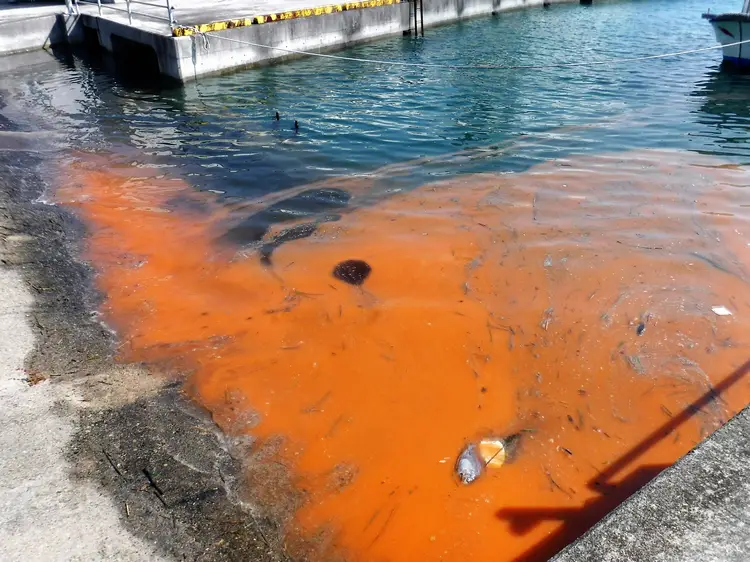
What does red tide look like?
Red tide appears as a reddish-brown discolouration in the water, which can sometimes cover vast areas of the costal waters in the Gulf of Mexico in Florida.
What algae causes red tide in Florida
The tiny organism that causes red tides in Florida is an algae known as Karenia Brevis (dinoflagellate Karenia brevis), which is found almost exclusively in the Gulf of Mexico. Red tides in the Gulf of Mexico can occur from Florida to Mexico and is moved around the gulf with the winds and currents.
You might like to watch this video from Fox 13 about Florida’s red tide in June 2021.
Red tide is nothing new to Florida. The Karenia brevis algae species can be harmful and even deadly to marine life, sending dead fish washing up on beaches and even posing a health threat to humans.
How long does red tide last?
Red tides can last from as little as a few weeks to longer than a year, but usually last from three to five months from when it first appears. Red tides are also known to disappear, only to reappear a few weeks or a few months later in the same year.
Is red tide harmful to humans?
Red tide can be harmful to humans if they swim in the sea when a red tide is present and can be toxic if they eat shellfish or molluscs that have been gathered in a red tide. These harmful algae blooms (HABs) which cause red tides can cause illness in humans that can be debilitating or even fatal.
Some people end up with respiratory problems and find it difficult to breathe. Others, including children, have had asthma attacks caused by the brevetoxins in the surrounding air, which is as a result of the red tide. Some asthma attacks have been so severe people have had to go to hospital for help.

Can red tide make you cough?
The symptoms caused by the toxins from a red tide include coughing, especially if you suffer from a severe respiratory problem. The red tide toxins also cause sneezing and teary eyes too.
To read more about red tide cough and why this happens, please take a read of this article about red tide cough. The article also explains how to treat the symptoms of a cough caused by red tide toxins.
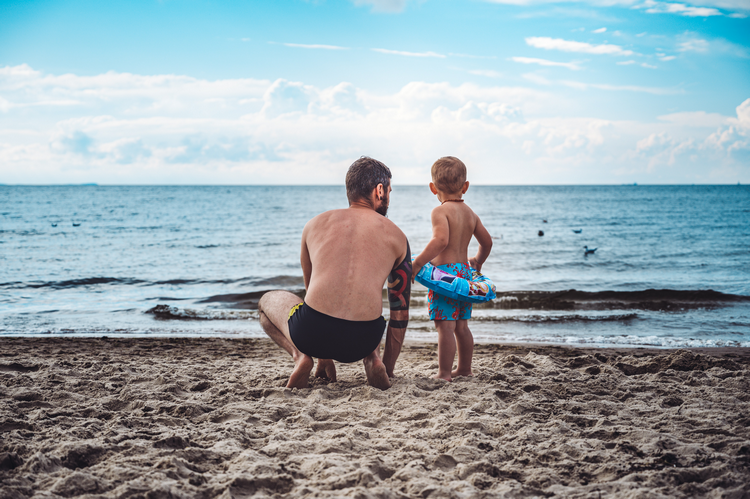
Is it safe to swim in red tide?
It’s not advisable to swim in a red tide, as the harmful algae blooms responsible for the red tide can cause skin irritation, rashes and burning or it can cause sore eyes. Red tides often kill fish too and it’s not advisable to swim near dead fish, due to increased levels of bacteria in the water.
However, most people are not affected by a red tide at all, in which case it’s okay to swim in a red tide as long as you don’t ingest the water. But you won’t know until you swim in the harmful algae blooms whether you’ll be affected or not, so there is a risk of the toxins affecting you the first time you swim.
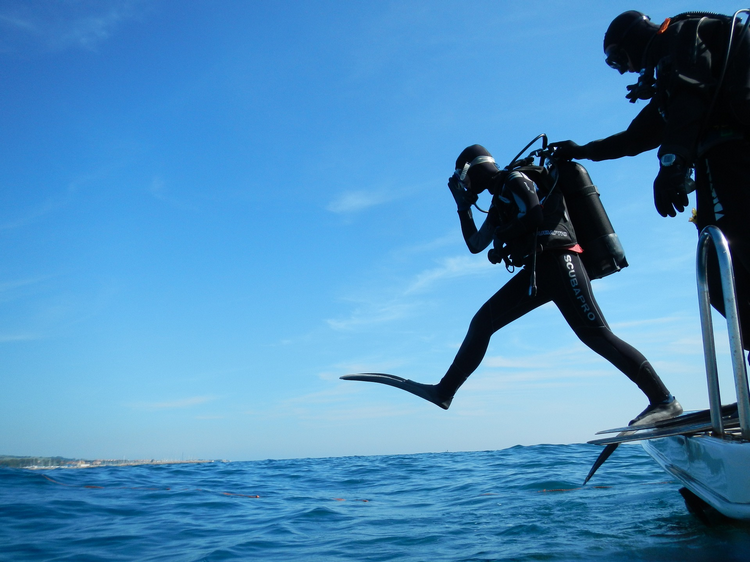
Can you scuba dive in red tide?
You can scuba dive in a red tide, as long as you don’t ingest significant quantities of the orgasms, which would cause other problems due to ingesting excessive amounts of saltwater in any event. But if you’re sensitive to the toxins produced by the algae, you’re best to not dive in a red tide.
Can red tide affect you during or after a dive?
A red tide can affect you during a dive if your skin is sensitive to the toxins produced by the harmful algae blooms. A red tide can also affect you before and after a dive if your lungs are sensitive to the airborne toxins. Red tide can also affect visibility on a dive too.
It is therefore sensible to find out before you go on a scuba diving trip, whether or not you are affected by the toxins produced by red tide algae blooms.
For example, you may discover you’re immediately affected by the airborne brevetoxins when you’re on a beach in Florida.
These affects may include an over production of flehm, congestion or coughing. If you suffer from any of these symptoms, you should avoid scuba diving when red tides are present.
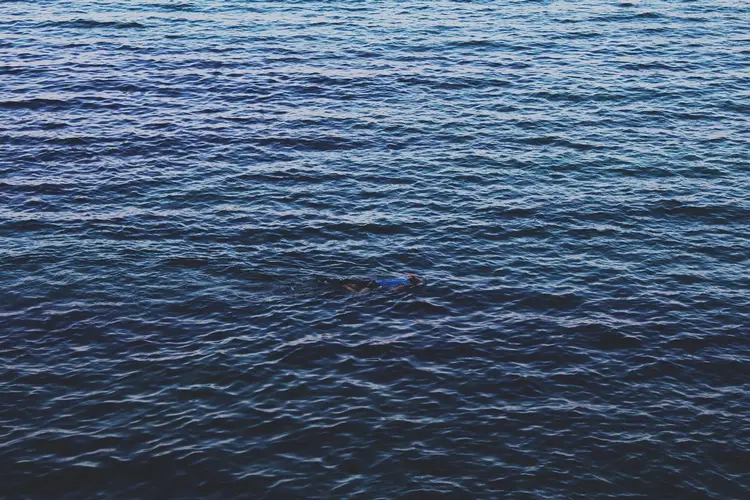
Can you snorkel in red tide?
You can go snorkeling in red tide if the water is clear enough to see and you don’t ingest significant quantities of the algae, but this would cause problems due to ingesting excessive amounts of saltwater in any event. But if you’re sensitive to the toxins from the algae don’t snorkel in red tide.
Can red tide affect you during or after snorkeling?
A red tide can affect you when snorkeling if your skin is sensitive to the toxins produced by the harmful algae blooms. A red tide can also affect you before and after snorkeling if your lungs are sensitive to the airborne toxins that you’d be breathing in through your snorkel on the surface.
It is therefore sensible to find out before you go snorkeling if you are sensitive to the toxins produced by the algae bloom of a red tide. For example, if you find you are immediately affected by the airborne toxins when you’re on a beach in Florida, which may include an over production of flehm, congestion or coughing, then you should avoid snorkeling when red tides are present.

Collecting shellfish or molluscs when diving or snorkeling in a red tide
Don’t collect shellfish or molluscs for eating when snorkeling or diving in a red tide, as this can be seriously dangerous for your health. Shellfish and molluscs are filter feeders, which means the toxins will build up inside these creatures, thereby making them highly toxic for humans to eat.
What shellfish are included in the ban during a red tide?
The harvesting of bivalve molluscs that include clams, muscles, oysters and coquina clams is banned during red tides, but you can eat crabs, lobsters, crayfish, prawns and shrimps during a red tide, as these are not affected by red tides.
What does red tide smell like?
Red tides smells like rotten eggs, which is a sulphur-like smell and is similar to decaying food, which has gone well on its way into the decaying process. The smell of red tide on the wind is enough to turn the stomach for anyone who smells it.
It is worth a caution if you suffer from any form of chronic respiratory disease, such as emphysema, asthma or bronchitis, as the toxins in the air can seriously affect these types of condition.
What months does red tide occur in Florida?
Red tides or harmful algae blooms are most likely to occur in Florida from August to November. However, red tides in Florida have been known to occur in every month of the year, and scientists are still researching what factors affect the formation of these red algae blooms.
Is it safe to eat in Florida restaurants during a red tide?
It is safe to eat in restaurants in Florida during a red tide, even if you eat fish, shellfish and molluscs, as the restaurants will source their seafood from outside red tide areas to make sure it’s safe to eat.

What is red tide alert?
A red tide alert is a warning to notify people when surrounding seas have significant harmful algae blooms, like Florida had in July 2021. When a red tide alert is in place be cautious about where you swim, snorkel or scuba dive to avoid any health related problems that may be caused by the toxins.
How do you get updates of red tide in Florida?
Updates for red tide in Florida can be found on Gulf of Mexico Coastal Ocean Observing System (GCOOS), which is the first sustained tool to provide the public with a forecast focused on the movements and impacts of toxic algae blooms.
The GCOOS Red Tide Respiratory Forecast, which can be found here, provides a near real-time prediction of whether beachgoers can expect red tide conditions on a particular beach. This is update at three-hour increments throughout the day. This risk-level forecast for red tide respiratory impacts is activated in Florida and Texas.
The red tide research and tool to forecast red tides in Florida and Texas is a part of the Integrated Ocean Observing System (IOOS) and the National Oceanic and Atmospheric Administration (NOAA).
Here’s a video by GCOOS that gives more information about red tides:
The Red Tide Respiratory Forecast provides a near real-time prediction of whether beachgoers can expect red tide conditions on a particular beach at three-hour increments throughout the day. This risk-level forecast for red tide respiratory impacts is activated in Florida and Texas when red tide conditions are present.
Where is red tide the worst in Florida?
It appears that the worst red tide blooms occur on Florida’s Gulf Coast in and around Tampa Bay on Clearwater Beach and St. Pete’s Beach. Other areas that tend to have high concentrations of algae blooms include Sarasota County, Pinellas County, Hillsborough County and Manatee County.
Red tide Pinellas County Florida
Pinellas County gets badly affected by red tides, which is on the west coast of Florida and in the Gulf of Mexico. The harmful algae blooms that cause red tides in Pinellas County affect Clearwater Beach, St. Pete Beach, Madeira Beach, Indian Rocks Beach, North Redington Beach and Honeymoon Island.
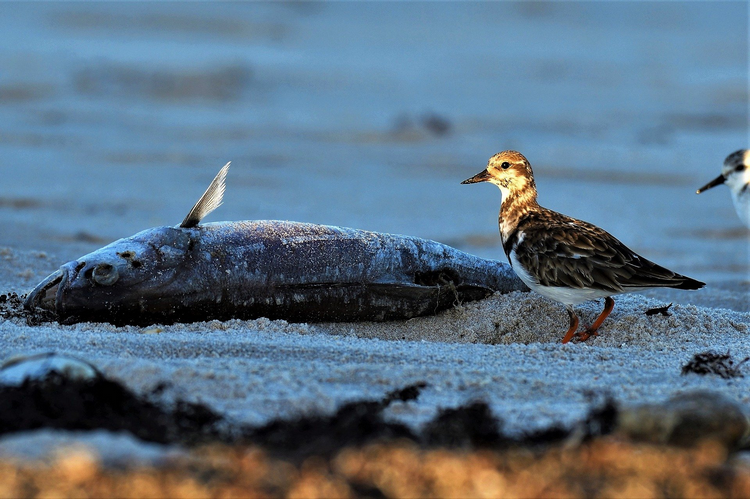
How can you identify a red tide?
The way to identify red tide is from the reddish-brown colour in the water caused by the harmful algae blooms. You may also identify red tide by the sulphur-like smell from the brevetoxins in the air, especially if the wind is blowing in an onshore direction, plus you may see dead fish on the beach.
What gets rid of red tide?
The best way to get rid of red tide is to use clay mitigation, which involves spraying the surface of the affected area with a slurry that contains clay particles. The clay particles in the slurry combine with the algae blooms, which sink to the seabed and kills the algae.
What are the symptoms of red tide exposure?
- Skin contact with a red tide can cause skin irritation, rashes, and burning or sore eyes.
- Inhalation of the airborne brevetoxins from a red tide can cause breathing problems, which is often worse for those individuals with asthma, emphysema, or any other chronic lung disease.
- Ingesting toxic seafood, which can cause paralytic shellfish poisoning, as a result of red tide contaminated seafood, can result in symptoms such as tingling, burning, numbness, drowsiness or even respiratory paralysis.
Can red tide cause flu like symptoms?
Some residents in Florida experienced flu-like symptoms after visiting the beaches during the red tide algae bloom.
Can red tide cause pneumonia?
During a red tide a study carried out in Sarasota Florida found there was a 19% increase in the rate of pneumonia cases diagnosed during a 3-month onshore red tide event among coastal residents. The same study found a 54% higher rate of diagnoses of respiratory illness such as pneumonia, bronchitis, asthma, and upper airway disease.
What is red tide poisoning
Red tide poisoning, which is known as paralytic shellfish poisoning (PSP), is a sickness developed by people after they’ve eaten seafood like shellfish and molluscs that’s been contaminated by red tide. Symptoms from red tide poisoning normally occur within two hours of consuming contaminated food.
How long do red tide symptoms last?
For most people the symptoms caused by red tide usually disappear within hours after being exposed to the toxins, once exposure is discontinued. But people with chronic respiratory conditions should be more cautious in red tide areas, as these individuals may take longer for the symptoms to subside.
Where does red tide occur in the world?
Red tides occur most commonly in the United States along coastal waters in the following regions:
- Almost every summer along the Gulf Coast of Florida.
- The Texas coast.
- The coast of California.
- The Gulf of Maine.
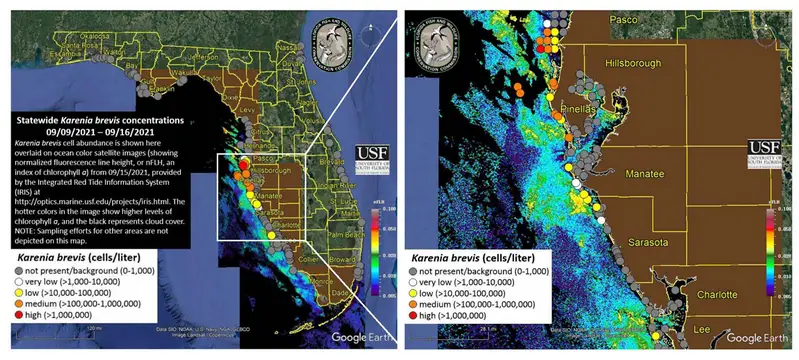
Florida red tide map
For updates of which areas of Florida are affected by red tides, visit the GCOOS Red Tide Respiratory Forecast, which can be found here. This provides a near real-time prediction of whether beachgoers can expect red tide conditions on a particular beach.
I hope you enjoyed this page about red tide Florida and how a red tide affects swimming, diving & snorkelling
If you have more questions either about snorkelling or scuba diving (or specifically about red tide Florida and how a red tide affects swimming, diving & snorkelling), please comment below with your questions.
Please share your experiences, plus dive sites, resorts and liveaboards you recommend. Share the time of year of your trip together with what you saw, the visibility, currents and dive operator, as this will help others who read this page.
There will also be many more pages and articles about scuba and scuba diving safety tips (and on snorkelling too) for you to read and learn about this fabulous sport.
Have fun and be safe!


